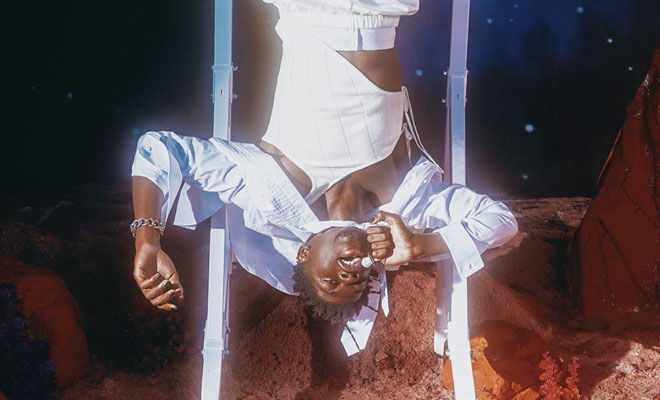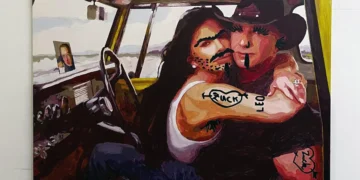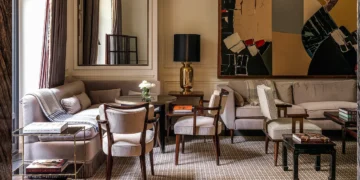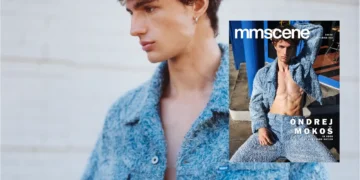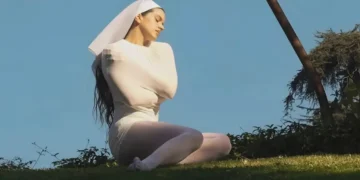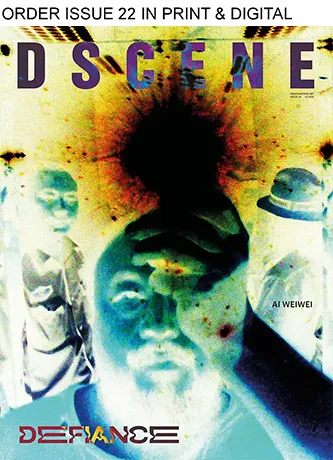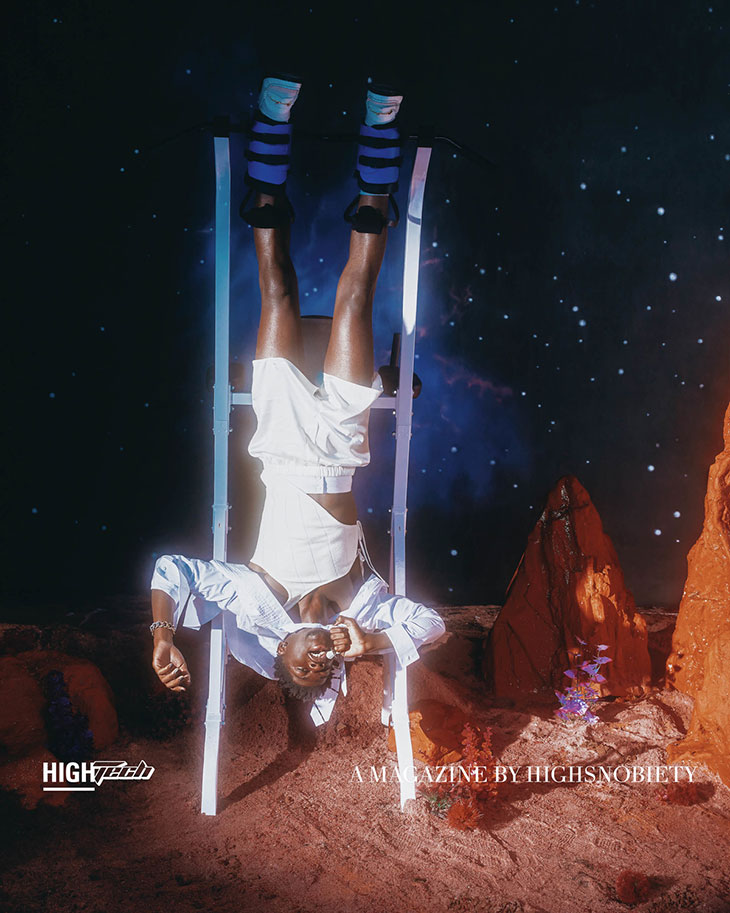
American Visual Artist and Set Designer Taylor Horne sits down for an exclusive interview with Editor Zarko Davinic to talk about his start in the fashion industry, his work process and plans for the future.
INTERVIEWS
Read our interview with Taylor Horne after the jump
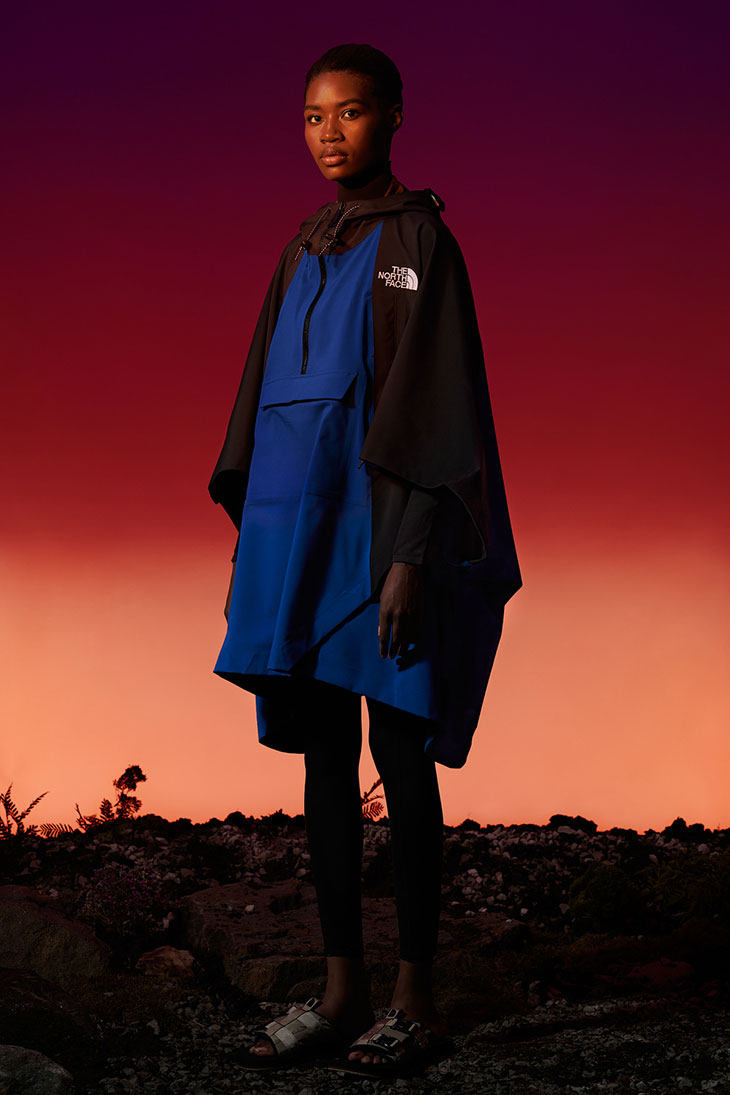
How did you get into set design? I was always building things as a kid. I grew up in rural Pennsylvania, outside of Philadelphia. My father worked construction, and my mom was a waitress. We lived in a 100-year-old colonial home, and my father would make me help him fix up the house and teach me how to do things in his little workshop he had in the basement.
I went to school for photography after giving up on musical theater, but when I moved to New York eight years ago, I was so broke that I started working as a scenic carpenter. My photography work always included sets, and people started asking me to build sets for them. I found that I really enjoy creating spaces for characters to live in and set design came naturally to me, so one thing led to another.
Can you break down the work process of a set designer? Ideally, the director or photographer tells me about the story or character and I start with a drawing of the world I think they should be in. After that begins, the process of dealing with the technical side of how it all is made and how it is safe for the talent and crew and supervising that process, and then getting it to and from where it’s being shot.
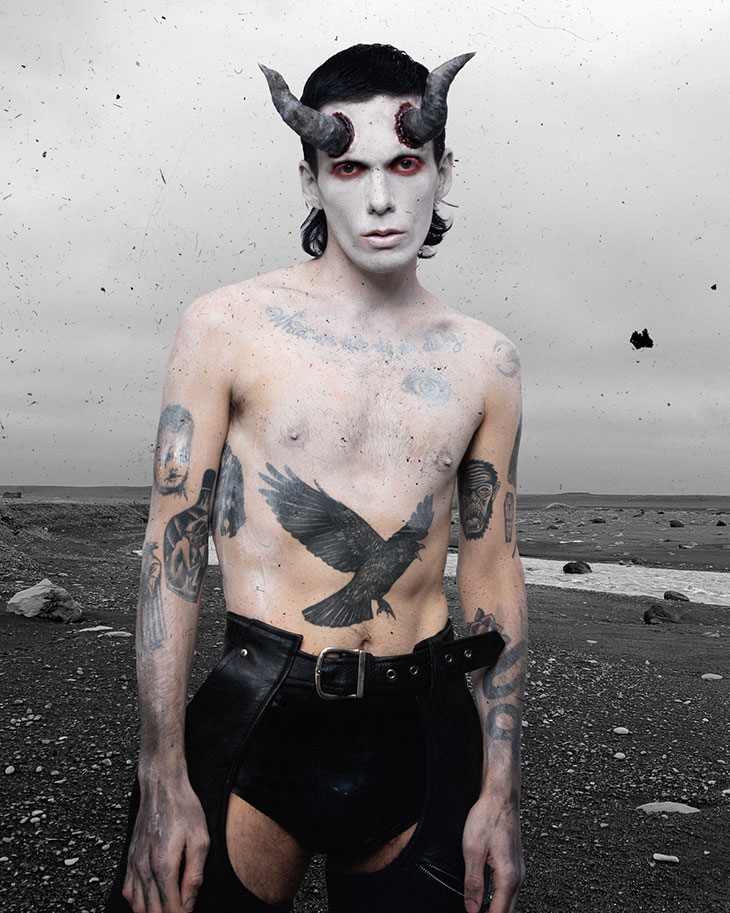
Dante’s Inferno Series – Self Portrait – © Taylor Horne
Could you tell us more about Taylor Horne the “Monster Maker”? I started creating prosthetics a while back, but it wasn’t until quarantine that I really got into turning myself into different monsters. Being isolated in my apartment, I got so tired of looking at my regular self and couldn’t work with anyone, so I got lost in transforming myself into different characters.
I’ve always loved horror movies, and I’m especially inspired by the dichotomy of evil characters. I believe we all have a little evil in us, so it’s an interesting space to explore creatively. It’s fun to lean into the darker side with my self portraiture, and then I can take it all off and be my regular self again. I also see these characters as strong and commanding, so it’s empowering for me to see myself embody them in a photo.
I’m just so grateful to be able to employ other queer weirdos and laugh with them. I think the projects that stand out to me are the ones where we made something really cool and had fun doing it.
Set design work involves both creative concept planning and also the physical, logistic side of actually creating the set. How do you balance those two different demands? I am very fortunate in that I feel I have an equal right-brain/left-brain balance. I am really good at being creative and imagining the worlds I create, but I also approach my work from the practical viewpoint of designing things that can actually be made and having a process in mind for how they are made. Being based in New York means dealing with a lack of space, so you really have to design things that can be transported, assembled, and broken down efficiently. So much of my job is tracking the movement of objects and loading and unloading trucks. It’s kind of rad, because when you pack the truck after a shoot, it really feels like it’s over.
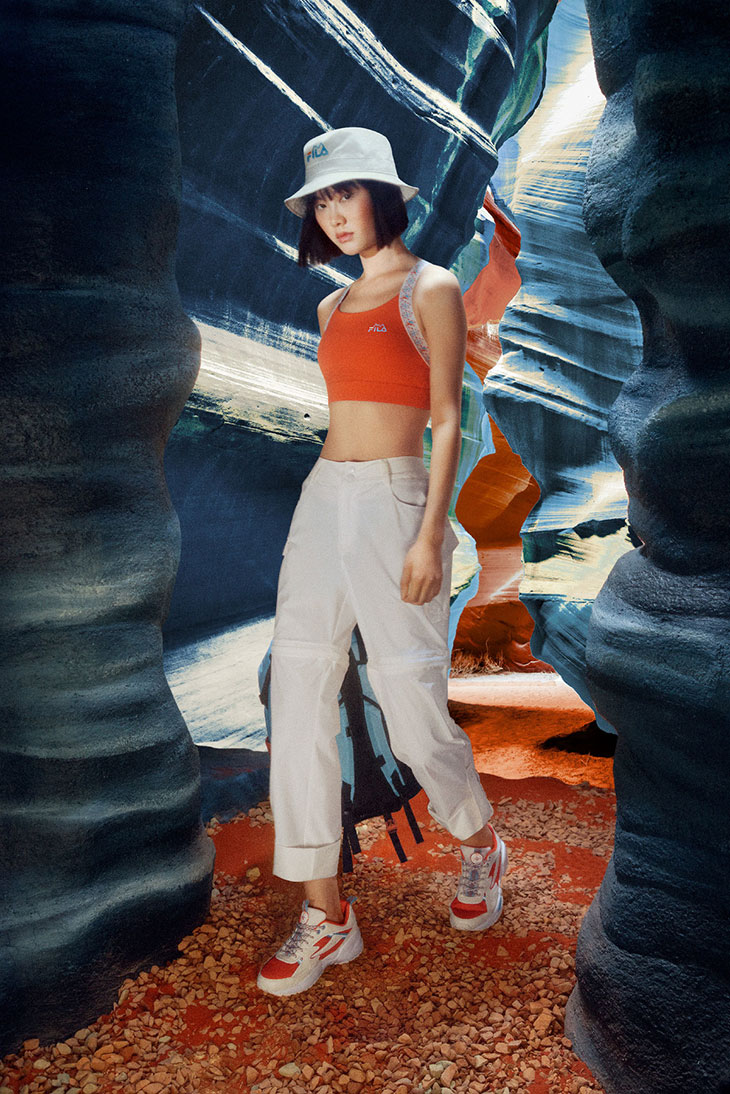
You’ve worked with a range of clients like CR Men, L’Officiel, Paper, Highsnobiety, Gucci and Fila. Do you have a favourite project and why? Honestly, I’m a poor punk kid from Pennsylvania. The fact that people have given me the opportunity to make things for brands that people have actually heard of and get displayed all over the world astounds me. I never really get over it when my mom says she saw my work on a magazine cover in her local grocery store or CVS and she buys them all. I’m just so grateful to be able to employ other queer weirdos and laugh with them. I think the projects that stand out to me are the ones where we made something really cool and had fun doing it.
What do you do with the pieces you’ve created for sets after the filming is done? There are a few relics I hold onto. I still have this giant cross I made for Miley Cyrus, but most of it gets destroyed right after. I dislike the waste of it all, but I don’t like to shoot the same things over and over.
Do you have any unfinished projects or plans you are yet to realise? I’m always working on something. I’ve been focusing on my self portraits, and eventually, I’ll compile them into a coffee table book. I have these giant wings a friend gave me, so I’m slowly working towards shooting a look with them.

Is there anyone you would like to collaborate or work with, who you haven’t had the chance to? Elvira, 100%. I’d be honored to create a world for her. The classic campy horror host sets with the fake stone dungeon walls. I grew up watching her, and I love her so much.
I read a very touching post on your Instagram talking about Dominique Jackson who inspires so many of us. Besides Dominique, who else inspires you and keeps you motivated? Aw, Dominique is an icon. I was so starstruck meeting her and having the opportunity to work with her. Not because she’s famous, but because she’s so unapologetically herself, loving, and kind. To receive love from her was really cool. I’m inspired by anyone who walks into a room fiercely with pride. I’ve overcome so much in my life and have so often been made to feel small by others, so Dominique looking at me and saying, “Don’t do that, don’t diminish yourself, this is our moment” really shook me, because I really needed to hear that and believe it.
People have grown incredibly self-centered with social media and really only care about things they can either copy, see themselves in, or gain social capital by reposting. And for some reason, against my most valiant efforts, set design just isn’t as valued as photography, hair, makeup, or styling.
What are you working on currently? I’m currently working on convincing anyone what will listen to me that I need to be cast as the talent in things. This quarantine situation really reminded me how much I love acting and singing. I want to use my body to tell empowering queer stories. I’m also trying to grow my platform so that I can be more of a voice for overcoming addiction, as I’m eight years sober.

Fashion industry has suffered immensely with the Covid19 crisis, with magazine foldings and budget cuts across the industry. Where do you see all of us going in 2021? This is an issue I’m very passionate about. Magazines have never had money. I think print is over, and hopefully, the exploitation and underpayment or nonpayment of creatives will end with it. This pandemic really woke people up to the insanity and disrespect of asking someone to work for free. I turned down so many editorials this year, because it just isn’t meaningful for me to give my creativity away for free. Set design is always credited at the bottom, in the gutter of the page binding under the hair assistants. I hope we’re all moving towards a better workplace.
I think print is over, and hopefully, the exploitation and underpayment or nonpayment of creatives will end with it. This pandemic really woke people up to the insanity and disrespect of asking someone to work for free.
The source of visual stimulus seems endless today, but do you see the way people read things visually as shifting, or the level of visual self-education changing? Unfortunately, yes. I think people tend not to engage with anything deep or thoughtful. I’ve struggled with that in my work, because people really only care about my work when it’s attached to a celebrity. They don’t want to sit and think about the literary reference or the emotional meaning behind the work, and they just want to keep scrolling. People have grown incredibly self-centered with social media and really only care about things they can either copy, see themselves in, or gain social capital by reposting. And for some reason, against my most valiant efforts, set design just isn’t as valued as photography, hair, makeup, or styling.
Professionally, over the next five years, what are the things you want to do? As far as my company, Taylor Horne Studio, I want to keep focusing on creative direction and set design and doing that well, but I also want to create more opportunities for monster making, while also creating more jobs for BIPOC and queer individuals who want to make cool stuff and be treated well, thanked, and appreciated.
For myself, I really want to pivot back into acting and performing. I’d love to be on a Netflix show or something cool like that.
Keep up with Taylor Horne – @taylorhornestudio
